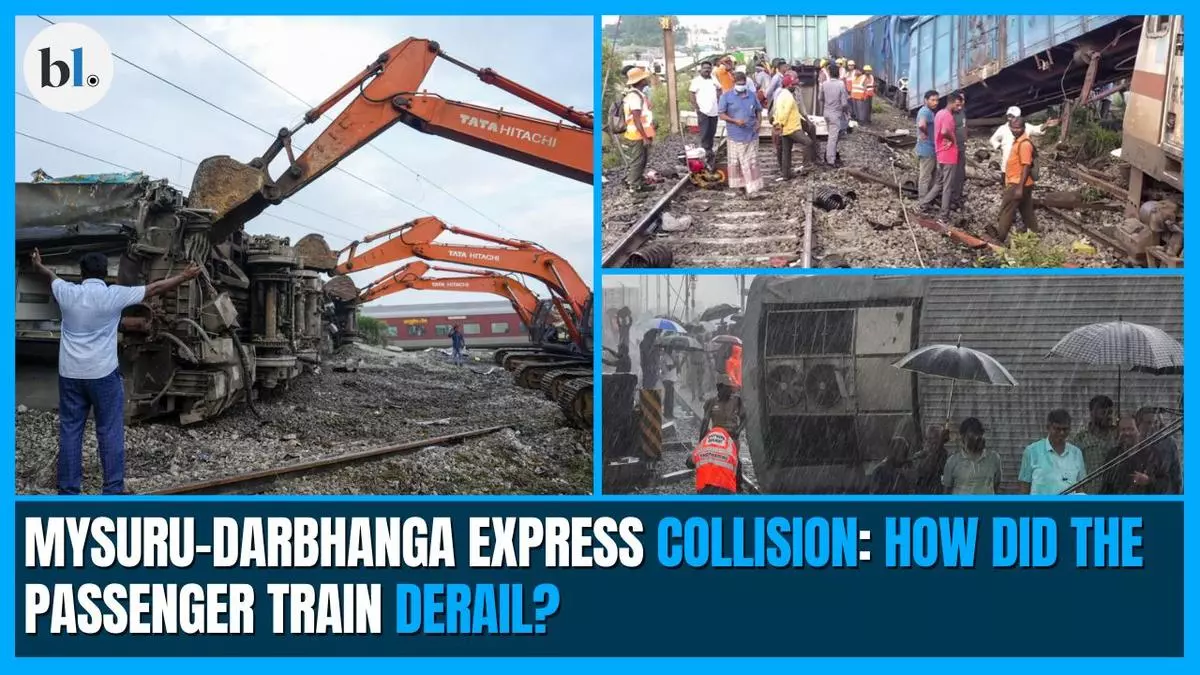Mysuru-Darbhanga Express Train Collision: A Closer Look at the Incident
On the evening of October 11, 2024, a significant train accident occurred near Chennai, Tamil Nadu, when the Mysuru-Darbhanga Express collided with a goods train. This unfortunate incident took place around 8:30 PM on the Chennai-Gudur railway section, specifically between the Ponneri and Kavaraippettai railway stations. The collision resulted in the derailment of at least 12 coaches of the passenger train, leading to injuries for 19 passengers.
The Scene of the Accident
The collision unfolded in a busy railway corridor, raising immediate concerns about safety protocols and operational procedures. Eyewitness accounts describe a chaotic scene as the passenger train, which was en route to Darbhanga, collided with the stationary goods train. The impact was severe enough to cause multiple coaches to derail, creating a tangled mass of metal and debris on the tracks.
Immediate Response and Rescue Operations
In the aftermath of the collision, swift action was taken by railway authorities and local emergency services. Relief and rescue operations commenced promptly, with teams dispatched to the site to assist the injured and evacuate passengers. Fortunately, all passengers were evacuated, and the injured were provided with immediate medical attention. Local hospitals were put on alert to receive those requiring treatment, ensuring that the response was both rapid and effective.
Passenger Experience and Safety Concerns
For many passengers aboard the Mysuru-Darbhanga Express, the incident was a harrowing experience. Reports indicate that some passengers were thrown from their seats due to the force of the collision, while others were trapped in the overturned coaches. The psychological impact of such an event can be profound, with many passengers likely to experience trauma long after the physical injuries have healed.
This incident raises critical questions about railway safety measures. The Indian Railways has been under scrutiny for its safety protocols, especially in light of previous accidents. The need for enhanced safety systems, including better signaling and communication between trains, is more pressing than ever.
Investigating the Cause
As investigations into the collision begin, authorities are tasked with determining the root cause of the accident. Preliminary reports suggest that a failure in communication or signaling may have played a role in the incident. The railway ministry has promised a thorough investigation, with experts analyzing data from the train’s black box and reviewing operational protocols in place at the time of the accident.
Community and Government Response
The local community has rallied around the victims of the accident, with many expressing their shock and concern. Government officials have also responded, with promises of support for the injured and their families. Compensation for the victims is expected to be announced, reflecting the government’s commitment to addressing the aftermath of such tragedies.
The Broader Implications for Indian Railways
This incident is a stark reminder of the challenges faced by the Indian Railways, one of the largest rail networks in the world. While the railways are a vital mode of transportation for millions, the safety of passengers must remain a top priority. The government and railway authorities are under pressure to implement reforms that not only enhance safety but also restore public confidence in the rail system.
As the investigation unfolds, the focus will be on learning from this tragedy to prevent future occurrences. The railway sector must evolve, adopting new technologies and practices that prioritize passenger safety above all else.
In the coming days, more information will emerge as authorities continue their investigation, and the community comes to terms with the impact of this tragic event. The resilience of the passengers and the prompt response from emergency services highlight the human spirit in the face of adversity, but the need for systemic change in railway safety remains a pressing concern.
